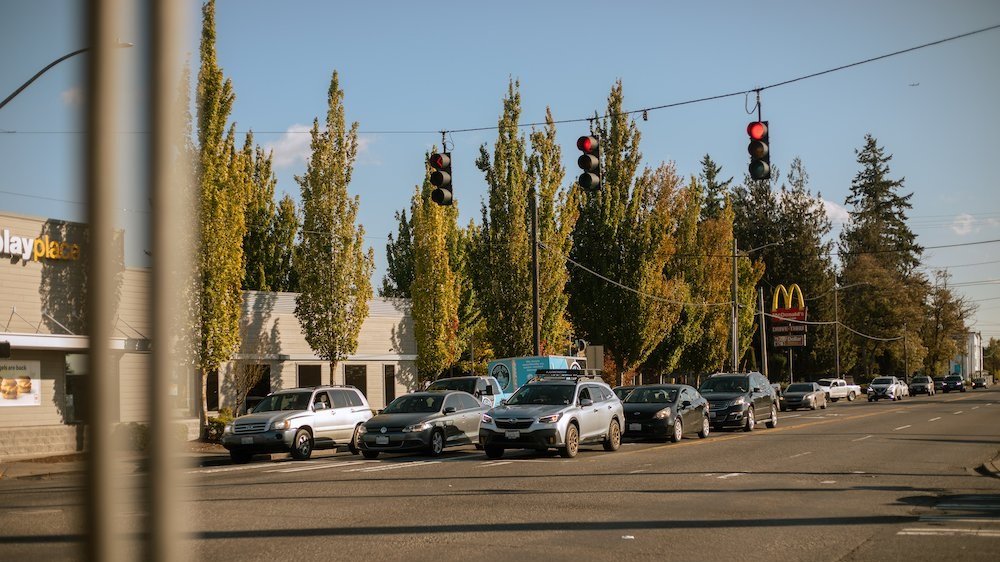Tree Benefits, Part 1: Silent Superheroes
Trees are incredible beings that provide countless benefits to our communities. In forests, rural, and urban environments, trees are impacting our daily lives. From our air and water, to our energy and traffic, trees play a role in how we are affected by an abundance of elements around us. Their impacts may go unnoticed but without them, the world as we know it would be unrecognizable.
Stormwater Runoff
We all know trees need water, but do you know that water needs trees too? The interception, absorption, filtration, and mitigation of stormwater runoff are some of the big ways trees help our ecosystems.
Stormwater runoff includes rain and other water sources that flows through our urban environment. With our ever-growing concrete jungle, excess water is a growing threat. Capable of carving out canyons and shaping landscapes, it is one of the most powerful substances on Earth. Loss of soil to impermeable surfaces has created more water pollution and a greater chance of flooding. When water isn’t allowed to absorb into the ground, it pools and moves through the city, picking up pollutants such as pesticides, fertilizer, or even pet waste that is then carried into our stormwater systems and can pollute our larger bodies of water, such as the Puget Sound. This poses a danger to wildlife, one example being Coho salmon, on which chemicals from tires have a devastating effect.
Helping to mitigate stormwater runoff is one of many reasons why trees in our cities are so important. Trees catch and remove pollutants from stormwater runoff in a few ways:
Intercepting Rainfall
When it rains, the leaves and branches of trees catch water as it falls, decreasing the amount of water that hits the ground at once. This limits how fast stormwater accumulates and helps to prevent events like flash floods. The softer impact also prevents an excess amount of dirt erosion.
Water Absorption
When the rain does hit the ground, it is absorbed by the roots of the tree. Roots play an important role not only in filtering out pollutants, but also in anchoring the soil and preventing erosion. In the roots and the soil around them, much water is stored and kept off the streets. A 2005 study found that a single tree absorbs an average of 1,685 gallons of rainwater each year.
Filtration
Trees play a key role in keeping our drinking water clean in the Pacific Northwest. When water passes through a tree after being absorbed from its roots, it is filtered by the porous tissues in the wood. The small pores act as a filter, cleansing the water of bacteria, excess nutrients, and contaminants. Much of this water is then excreted and enters back into the water cycle, cleaner and ready to drink.
Insulation
Large trees next to your house may seem to be a looming danger, but in fact, tall healthy trees stand over us, protecting us from the dangers of weather and wind. Trees, especially large ones, act as a barrier that shelters our homes from the heat, cold, and wind.
Heat
You have undoubtedly been outside on a hot day and sought relief under the shade of a tree. Whether it’s walking on a shaded sidewalk or finding a shaded parking spot, trees offer cool protection from the sun. The same applies to the trees around our homes. Their leaves and needles cast protective shadow that reduces the amount of energy needed to keep them cool. Neighborhoods with more canopy can be as much as 15 degrees cooler in the hot summer, as trees cool the air, the ground, and the buildings around them through a process called evapotranspiration.
Windbreak
In the winter, trees are once again there to protect us. Their branches and needles stand between us and the chilling wind. Buildings with trees around them are insulated from the cold and shielded from the wind, reducing the amount of heat needed to keep them warm.
Slowing Traffic
If you’re like us, you might find yourself driving under the canopy, admiring the sun speckles shining through the leaves and the serene green glow. There’s a term for this effect in Japanese culture, komorebi, which represents the way sunlight leaks through trees’ leaves. The calming effect of komorebi results in lower stress and frustration levels of drivers on streets with higher vegetation.
Another reason for increased traffic safety on tree-lined streets is the optical illusion of the streets being narrower. The perception of narrow streets encourages drivers to slow down. Additionally, decreased visibility due to the natural wall, causes drivers to stay more attentive of the road, pedestrians, and street signs, as well as drive at a more cautious speed to ensure the safety of those around them.
These are just three ways trees benefit our daily lives. Cleaning our water, insulating our buildings, and keeping our streets safe are just the beginning of the incredible things trees do for us and our communities. Watch our blog for part two where we will dive into three more fascinating ways trees make our lives better. If you want to support our mission of growing trees and community in the Greater Tacoma and Puget Sound area, you can donate or volunteer with us. Check out our upcoming events and remember to hug a tree!



